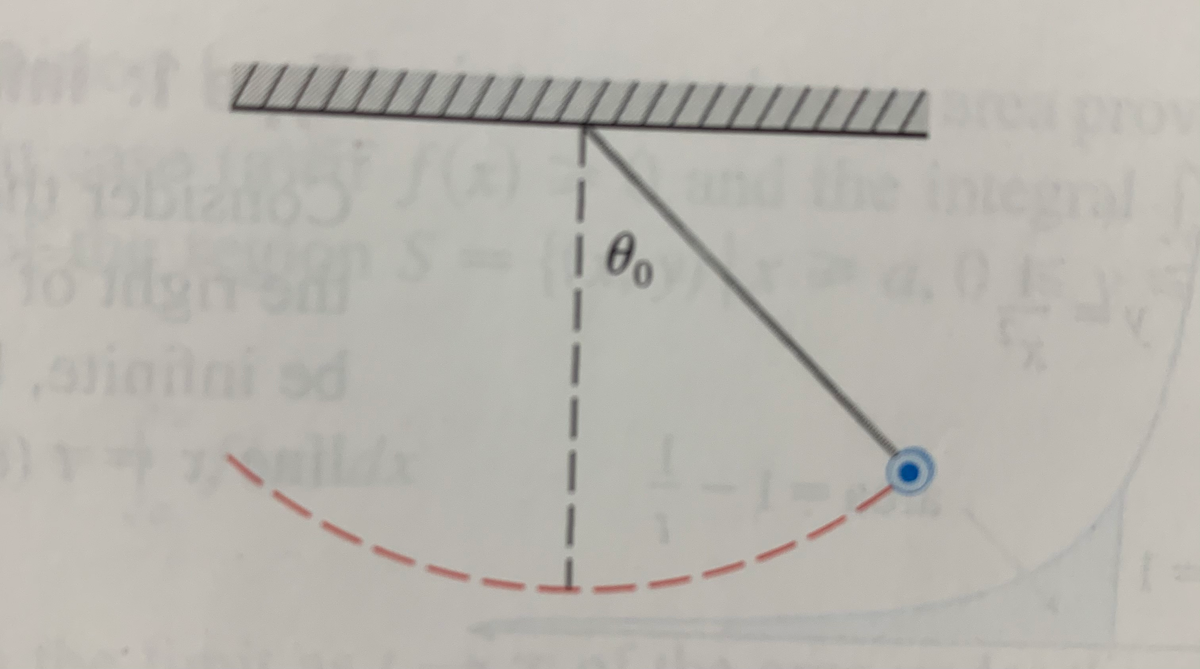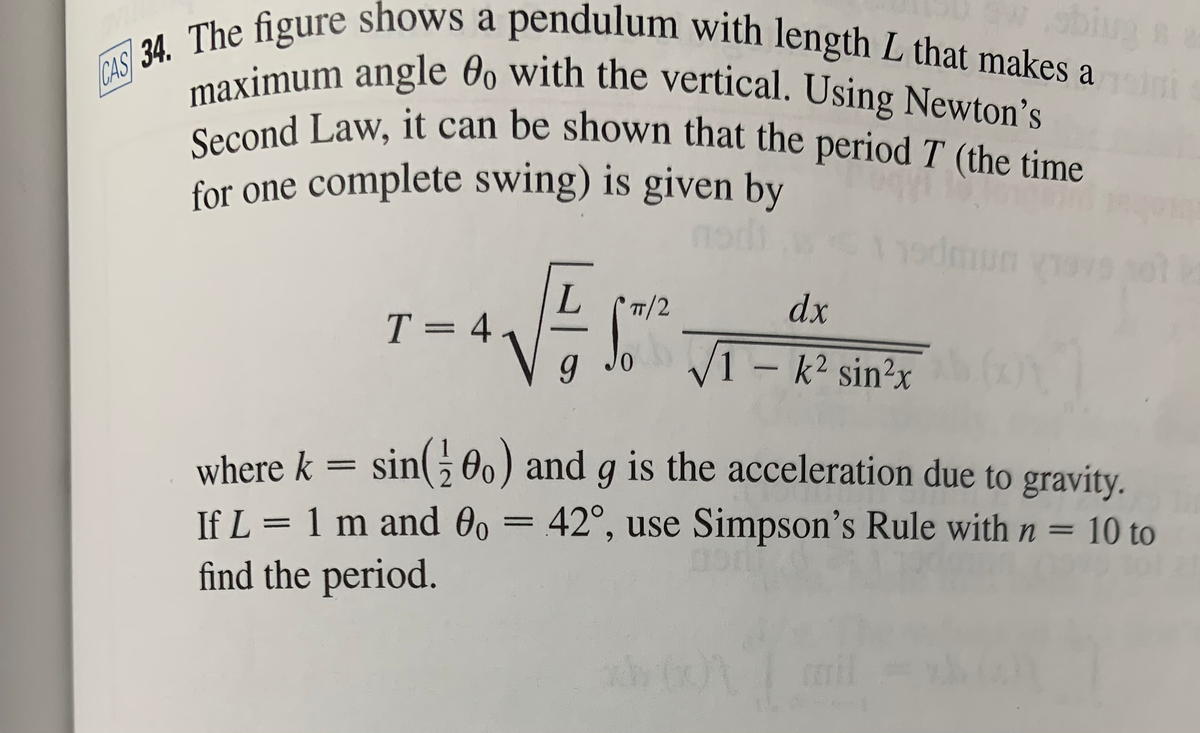biug The figure shows a pendulum with length L that makes a maximum angle 0, with the vertical. Using Newton's Second Law, it can be shown that the period T (the time for one complete swing) is given by Imun T/2 dx T = 4. 1-k2 sin²x where k = sin(; Oo) and g is the acceleration due to gravity. If L = 1 m and 0, = 42°, use Simpson's Rule with n = find the period. 10 to
biug The figure shows a pendulum with length L that makes a maximum angle 0, with the vertical. Using Newton's Second Law, it can be shown that the period T (the time for one complete swing) is given by Imun T/2 dx T = 4. 1-k2 sin²x where k = sin(; Oo) and g is the acceleration due to gravity. If L = 1 m and 0, = 42°, use Simpson's Rule with n = find the period. 10 to
Related questions
Question
The figure shows a pendulum with length L that makes a maximum angle θ0 with the vertical. Using Newton's Second Law, it can be shown that the period T (the time for one complete swing) is given by T = 4 L g π/2 dx sqrt(1 − k^2 sin^2(x)) where k = sin( 1/2 Θ0 ) and g is the acceleration due to gravity. If L = 1 m and θ0 = 42°, use Simpson's Rule with n = 10 to find the period.

Transcribed Image Text:7.
1
| 0
To
od
--

Transcribed Image Text:maximum angle 0, with the vertical. Using Newton's
Second Law, it can be shown that the period T (the time
34. The figure shows a pendulum with length L that makes a
CAS
Cacond Law, it can be shown that the period T (the time
for one complete swing) is given by
L
T = 4
*7/2
dx
Jo
V1 -k2 sin²x
where k = sin(G 0) and g is the acceleration due to gravity.
%3D
If L = 1 m and 0o = 42°, use Simpson's Rule with n = 10 to
%3D
find the period.
Expert Solution
This question has been solved!
Explore an expertly crafted, step-by-step solution for a thorough understanding of key concepts.
This is a popular solution!
Trending now
This is a popular solution!
Step by step
Solved in 5 steps
